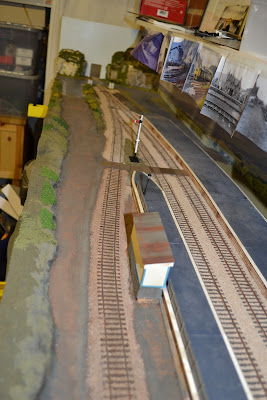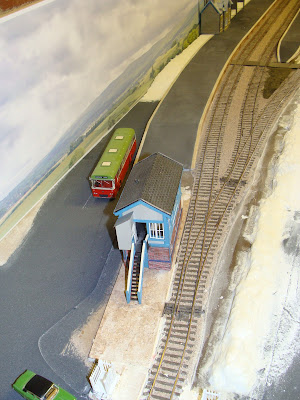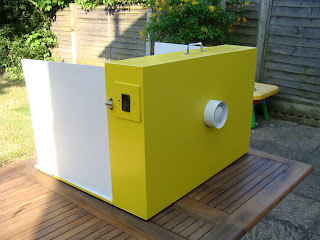Earlier in this blog I have mentioned a layout called Glasgow St. Mungo's. I moved house last summer and with it I realised that the layout was too big for the new Chez Shea residence so I sold it on ebay. Since then the frustration of not having a layout of my own to run my stock on has been countered by being able to use the Club layout for running and at the Annual Show last year. But this also has its limitations; the Club is in Andover 40 miles from my home and with the spiralling price of fuel a weekly trip to Andover is becoming prohibitive.
So what is the solution? Build another layout of course! I have spent some time over the winter laying floorboards in the loft to increase our storage space - three year old girls have a lot of toys and clothes - and found a length of MDF 6' x 17" up there amongst some other junk. After some time thinking of ideas for a layout on such a small baseboard area, Morar and Garve have always been up there, the March issue of Model Rail magazine dropped through my letter box with their annual Model Rail Scotland theme including an article on Ardlui for a small space layout.
I spent a few weeks researching Morar, Garve and Ardlui to see how I could replicate one of these locations in 6' x 17" - a "representation" could be achieved in this area with additional fiddle yards at either end. Track, points and additional timber was bought and the scenic baseboard is now complete.
The track plan features a single line into a station with a passing loop and short siding. The station itself is loosely based on Garve but I'm taking inspiration from Ardlui, Achnasheen and Morar. At the moment I haven't made the fiddle yards yet but at the end with the double track there is the scope to extend the station area and close the passing loop but that is for the future. For the time being the scenic area will go through a break at this end.
The track is laid and wired for DCC with the track weathered with a spray can of Railmatch
frame dirt, my can of
sleeper grime was empty and I didn't want to lose time getting some more but the effect is much the same. I painted the rail sides
dark rust by brush paying attention to keeping the points clear and only on the viewing side. After painting I tested the track again for DCC but there was a bit of juddering over one section of the pointwork that needs a bit of cleaning.
I only had one problem when wiring the track for DCC and that was with the power to the points. After taking some advice from other club members and a bit of soldering they worked perfectly.
The next task is to build and install the platforms before ballasting can begin.
 |
| Trying out the track layout with a typical two coach train that will be operated. |
 |
| The track after weathering and rail painting. |
 |
| The DCC wiring under the base board. DCC is so much easier for a non electrician like me. |














































